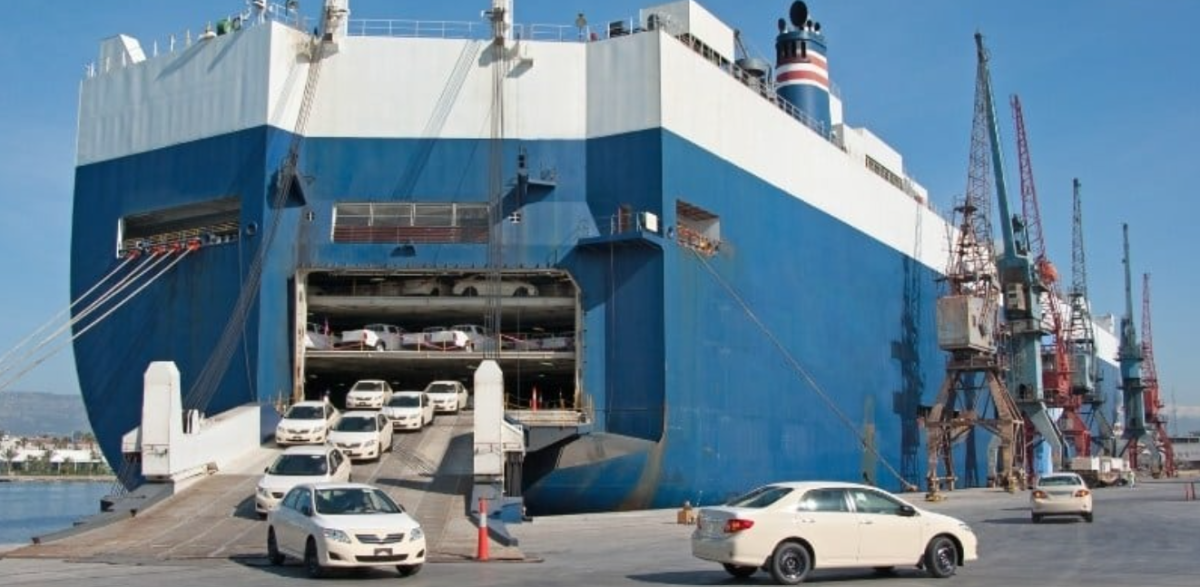Can more be done to improve the safety of carriage of cars on ships?
27/07/2022As the automotive industry looks to electric vehicles (EVs) to achieve zero carbon emissions by 2050, the shipping industry is having to devise ways to deal with uncertainty over the potential fire risks of transporting these vehicles, and the unfamiliarity with any associated fire characteristics.
As more EVs are being manufactured and shipped, the instances and severity of fires on car carriers and roll on/roll off passenger (ro-pax) vessels has gone up in tandem.
At a webinar organised by Safetytech Accelerator, Head of Maritime Engagement Rich McLoughlin said that while EVs are the automotive industry’s response to decarbonisation calls, recent fires on car carriers point to emerging risks surrounding EV carriage.
The growth of EVs
McLoughlin said, “We’re certainly seeing a huge push around decarbonisation, and the car industry has led in the development of battery technology and alternative fuel vehicles for this purpose.
“We have seen governments taking steps to ban combustion engine cars within certain timeframes and that is leading to an interest in the growth of EVs and alternative fuel vehicles. There has however, been some concern with the rate of change, whether with infrastructure or with safety systems. We have seen some of the risks around car fires and we have seen losses or damage to vessels which have been carrying vehicles.”
As the EU Parliament backs a phasing out of combustion engine cars by 2035, the European Maritime Safety Agency (EMSA) recently published guidance for the safe carriage of alternative fuel vehicles (AFVs) in Ro-Ro spaces of passenger and cargo ships to tackle this emerging challenge.
Each year, the EU imports 3.7 million vehicles and in 2021, there were over 16.5 million EVs on the road, tripling from 2018.
North of England P&I Club’s Director of Loss Prevention, Colin Gillespie shared his observation that from the club’s interaction with PCC operators, more EVs are being shipped, and vessels could carry both EVs and vehicles that still run on conventional internal combustion engines.
Gillespie added that in the five years before Covid-19 hit in 2020, North P&I Club noticed more fires in PCTCs, and the primary cause was electrical faults. Such fires declined in the early wave of the pandemic, as movement restrictions impacted on vehicle demand. However, the Felicity Ace loss occurred as vehicle shipments recovered.
Changing declaration requirements
Martin Carlsson, Fire Safety Project Manager at Swedish shipping group Stena’s technical unit Stena Teknik, said that the numbers of EVs being carried on ro-pax vessels are still in the single digits as a percentage of vehicles carried. He noted that it doesn’t reflect the proportion of vehicles on the street, because people don’t yet trust infrastructure overseas, so they are reluctant to bring their EVs abroad.
Carlsson suggested that as Covid-19-related travel restrictions are lifted, more people will resume travelling and more EVs may be shipped on ro-pax vessels. While Stena does not ask passengers to declare the type of fuel powering their cars, Carlsson does not rule out doing so in future, if this could mitigate fire risks.
He added that PCTCs would also have to be modified to make allowances for increasingly upsized cars, such as having more decks for heavier vehicles.
Carlsson said, “Cars are bigger and include more fire energy compared to 25, 30 years ago.”
New challenges in transportation
Paul Christensen, founding director of Lithiumionsafety.org, a consultancy focusing on lithium-ion battery safety, emphasized that such batteries, which power EVs, are highly flammable and fires from these can be challenging to extinguish.
He explained, “The gas that comes out from lithium-ion batteries is extremely toxic…If it ignites, you get long rocket-like flames. The drencher in the ships may protect surrounding vehicles, but because the batteries are at the bottom of the vehicles, they’re hidden from view.”
This is where technology, particularly visual analytics, comes in.
Osher Perry, CEO of maritime analytics specialist ShipIn discussed some of the solutions which technology could bring, for example sensors and AI which can be used to detect fire hazards.
He said, “This combination allows the development of solutions. When it comes to visual analytics, it’s about what methods of automation are we able to bring to give a response which can minimise damage, to get ahead. We keep talking about the fact that the vessels keep getting bigger, the challenges on the crew in terms of what need to be done increase, both in terms of tasks, administration, regulatory requirements, keep increasing. We have not yet provided the solutions, the digital tools that crews need to do their jobs in a safer and more productive way.”
The role of regulation
While the experts believe that the relevant regulations, such as the International Maritime Dangerous Goods (IMDG) Code, could be up for refinement, Gillespie thinks regulatory changes should be phased.
Gillespie said, “We’re looking at vessels that are not designed to carry EVs and alternative fuelled vehicles…The crew may not be trained in recognizing or dealing with those sort of fires…it’s on the industry, the operators and the people who support the vessel operators to try and move forward on those sort of things and work together in an industry standard way so that we get a common approach to recognizing and fighting the fires. If we sit around and wait for the IMO, wait for legislation, it maybe six or seven years down the line before those changes go through and take effect.”
McLoughlin concluded the webinar with a call to action for vessel operators and managers, supply chain members, port operators and tech companies to come forward to potentially join the next Safetytech Accelerator innovation challenge in this particular area.
Contact the Safetytech Accelerator here.
You can access the full webinar recording here:

